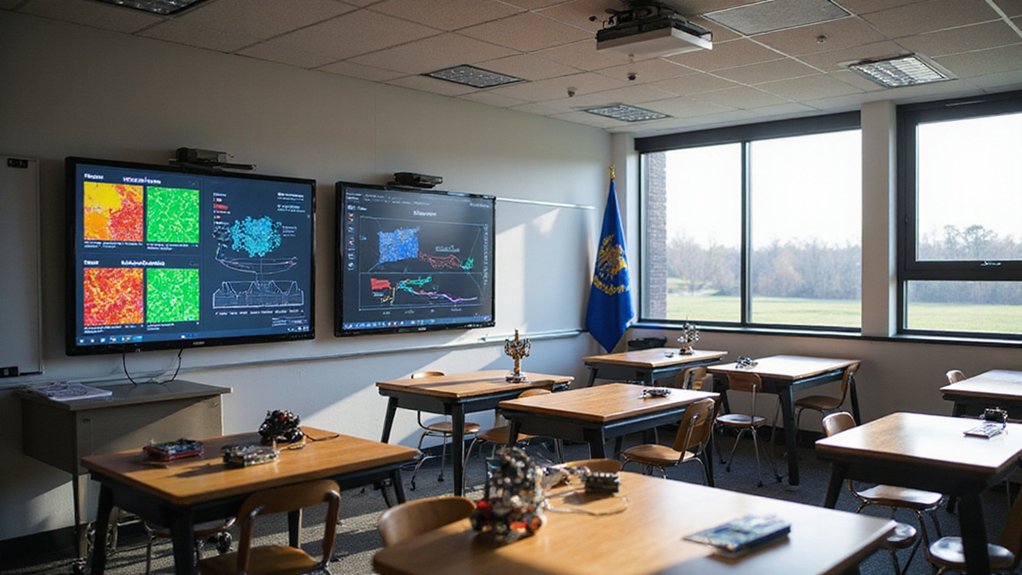How exactly did Mississippi become a surprising leader in classroom AI adoption? The state that typically ranks near the bottom in education metrics somehow managed to train over 2,100 people in artificial intelligence. Wild.
The Mississippi AI Collaborative has been busy. Really busy. They’ve engaged 3,500 individuals total, including 900 educators who learned through a train-the-trainer model. That’s a lot of teachers suddenly talking about machine learning between grading papers.
The state issued 600 certifications across various AI programs. Microsoft Copilot and other generative AI tools are now part of curriculum development. Teachers are actually using this stuff in workshops. The NVIDIA Deep Learning Institute resources are being integrated directly into curricula to provide cutting-edge training materials.
Money talks. Over $9 million went to Mississippi colleges and universities for AI and machine learning workforce training. The state created something called the Mississippi AI Talent Accelerator Program, or MAI-TAP. Catchy acronym.
They’re focusing on upskilling for product innovation and matching education with what industries actually need. Jackson State University jumped in with AI apprenticeship programs. Students are helping small businesses and nonprofits figure out AI solutions.
It’s practical, hands-on learning that beats sitting in lectures all day. Similar to healthcare AI adoption, these tools are helping educators reduce administrative paperwork by up to 50%, freeing them to focus more on student interaction. The state’s building both foundational and advanced technology infrastructure to support all this. The initiative specifically targets brain drain prevention, addressing Mississippi’s challenge of losing half its college graduates annually.
Teachers needed help. Lots of it. The AI educator accelerator program aimed to boost digital literacy and confidence. Workshops, Q&A sessions, curriculum design support – the works.
These 900 trained educators are supposed to spread the knowledge further. Community support extends to local schools, nonprofits, and small businesses getting access to AI resources.
Politics almost played nice. Senate Bill 2059 would have created an Artificial Intelligence in Education Task Force. Would have. The bill died in committee in March 2025, because of course it did.
The task force was supposed to evaluate AI applications and develop policy recommendations. Representatives from education boards, higher learning, workforce development, and tech experts were all lined up.
AWS, AccelerateMS, and the Mississippi Development Authority are collaborating to align AI education with actual workforce needs. They’re trying to keep local talent from fleeing to Silicon Valley. Whether it works remains to be seen.
References
- https://thegazebogazette.com/2025/06/mississippi-to-advance-artificial-intelligence-ai-education-with-nvidia/
- https://www.its.ms.gov/services/innovating/AI
- https://data.org/initiatives/ai-challenge/awardees/mississippi-ai-collaborative/
- https://magnoliatribune.com/2025/06/12/mississippi-ai-talent-accelerator-program-unveiled-by-governor-reeves/
- https://www.mississippifirst.org/blog/senate-bill-2059-artificial-intelligence-in-education-task-force/









